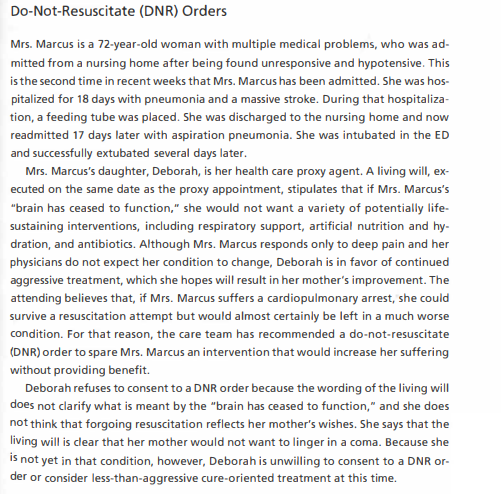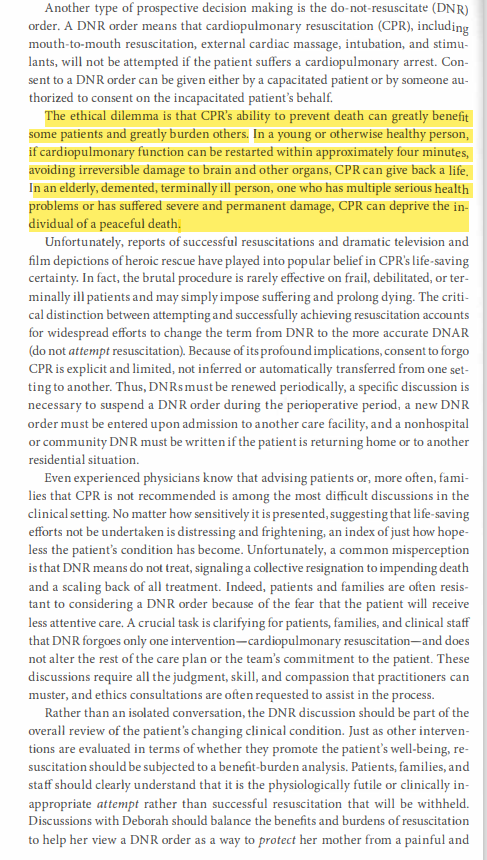Decision-making to place a DNR order on a patient's record should include which of the following considerations (check all that apply): Select one or more: a. Four to six minutes after cardiac arrest, or loss of circulation, the brain suffers significant damage, with resulting cognitive deficits, and if it is not performed quickly enough, CPR may result only in the rescue of a severely brain-damaged individual. b. A decision for "full code" ("Attempt CPR") or "no code" (DNR/DNAR) should be weighed carefully against the patient's overall condition, health, prognosis, and goals of treatment. c. The success rate for in-hospital CPR attempts is very low, particularly for elderly patients, where success is defined as "surviving to discharge with baseline neurological function intact." d. Elderly patients subjected to CPR often suffer secondary injuries, including cracked ribs, broken sternum, and damage to internal organs. e. CPR promises very different results for different patients, dramatically helping some and burdening others.
Decision-making to place a DNR order on a patient's record should include which of the following considerations (check all that apply):
Four to six minutes after cardiac arrest, or loss of circulation, the brain suffers significant damage, with resulting cognitive deficits, and if it is not performed quickly enough, CPR may result only in the rescue of a severely brain-damaged individual.
A decision for "full code" ("Attempt CPR") or "no code" (DNR/DNAR) should be weighed carefully against the patient's overall condition, health, prognosis, and goals of treatment.
The success rate for in-hospital CPR attempts is very low, particularly for elderly patients, where success is defined as "surviving to discharge with baseline neurological function intact."
Elderly patients subjected to CPR often suffer secondary injuries, including cracked ribs, broken sternum, and damage to internal organs.
CPR promises very different results for different patients, dramatically helping some and burdening others.


Trending now
This is a popular solution!
Step by step
Solved in 2 steps







